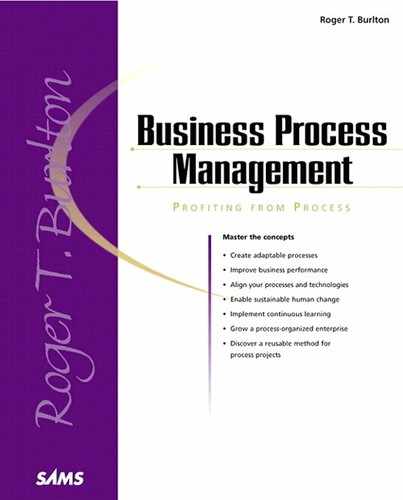Determining Human Capabilities
This step determines the core competencies of the organization’s staff, including the skills, strengths, weaknesses, and flexibility of workers within each business process as they currently exist. In this step, the organization identifies basic education and training required for new processes to succeed and identifies under-exploited staff capabilities. As a result, the requirements for layoff or new hiring programs will be known, and a more realistic assessment of the viability of process/technology change will be in place.
Techniques
The techniques of determining human capabilities are well-proven HR techniques that evaluate skills and competencies against a set of requirements:
Core competency analysis
HR skills assessment
Lessons Learned
Remember that this step involves an overall assessment of current capability, compared to the requirement for the future. It is not an individual-by-individual skills evaluation, so don’t get bogged down in details. Review existing job descriptions and collective bargaining agreements and examine existing plans for staff core competency enhancement. The requirements must especially recognize the changes brought on by new work locations, especially distributed or mobile ones.
Don’t delay or avoid change because the current staff isn’t capable of taking on different tasks at this point. If at all possible, train rather than replace existing staff to maintain continuity, retain corporate knowledge, and alleviate fear. Build a plan to transform the staff, but don’t be afraid to make the tough call of replacing individuals if they cannot learn. Go for the necessary changes even if it takes a little longer to get the staff there, and start early. At the same time, watch out for underutilized capabilities in your current staff; in some situations, doing so will enable an even greater process improvement. You’ll be using the staff you already have to greater potential through the removal of constraints and the releasing of creativity and commitment. Document the approaches for education, training, layoffs, hiring, and outsourcing of staff.
Process skill requirements will affect the results, along with cultural, behavioral, and relationship management needs. Competency gaps can occur because of a lack of knowledge, especially regarding customers and the industry. Gaps can also be associated with technology change, so look at the requirements and implications of closing those gaps in terms of training time and cost.
In many cases, a key requirement to do a job isn’t simply the ability to learn a new skill. The individual must be able to keep on learning forever to keep up with the new job’s and the new marketplace’s changing nature. Build a learning organization, not one that has to be totally renewed every two or three years.
